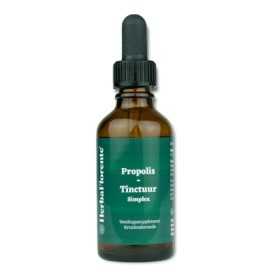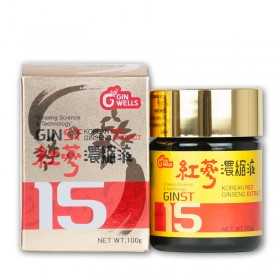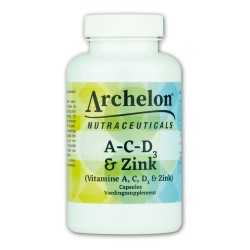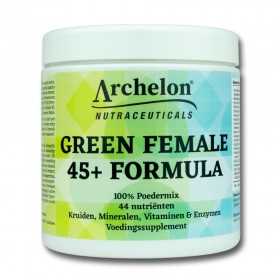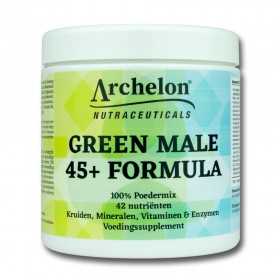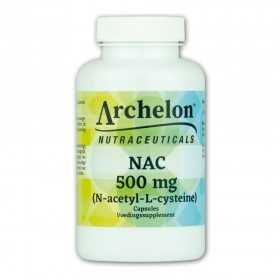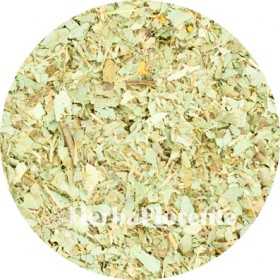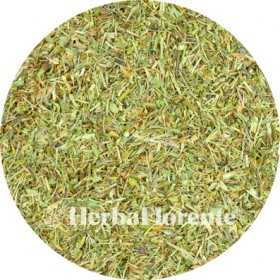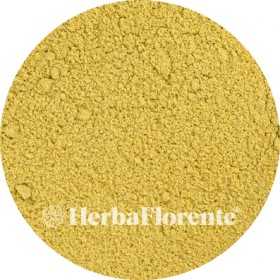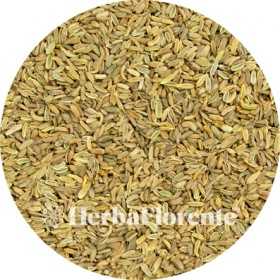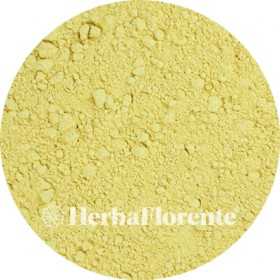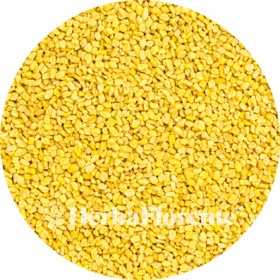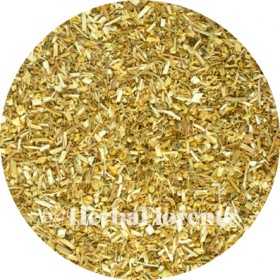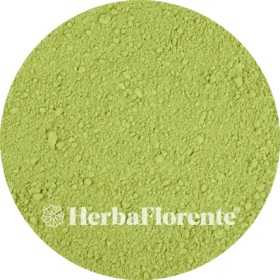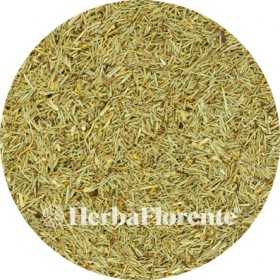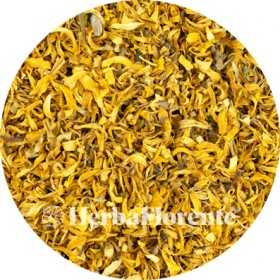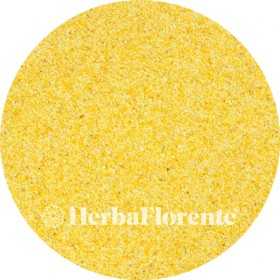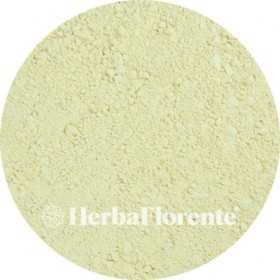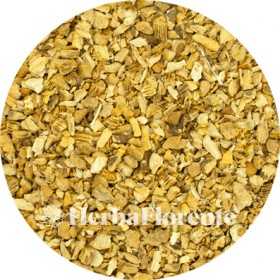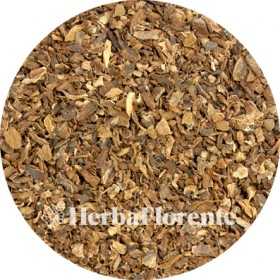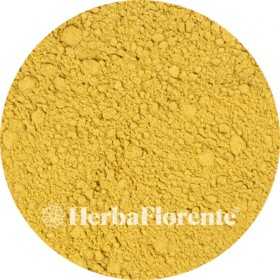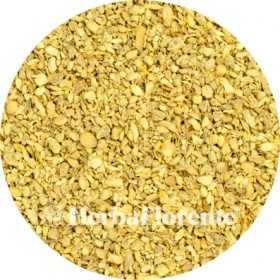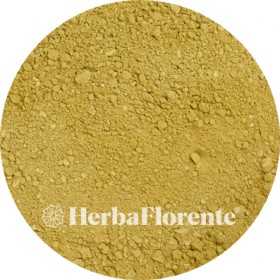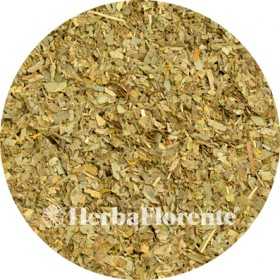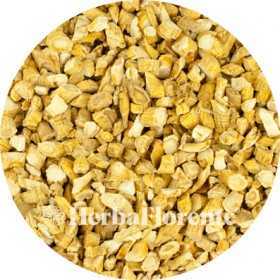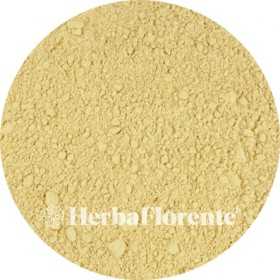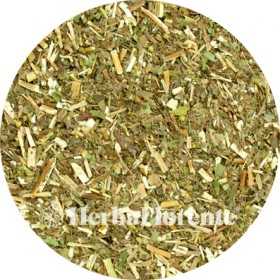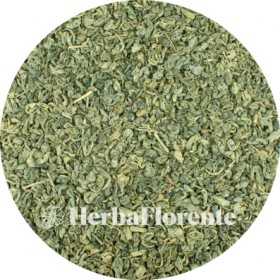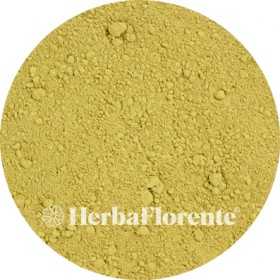Herbs
There are 207 products.
Eucalyptus - Eucalypti globulus
Eucalyptus (Eucalyptus globulus) belongs to the myrtle family (Myrtaceae) and is native to Australia and neighboring areas. Some specimens were brought to Europe by Joseph Banks during Captain Cook's expedition.
In Europe, eucalyptus is mainly planted in the Mediterranean region, although it can also thrive on the west coast of England and Scotland, although only some species can withstand winter.
Aromatic oil containing eucalyptol is extracted from various eucalyptus species. This oil, extracted from the leaves, is used for inhalation for colds to clear the airways. The two main species from which the oil is extracted are Eucalyptus globulus and Eucalyptus odorata.
In Europe, eucalyptus is mainly planted in the Mediterranean region, although it can also thrive on the west coast of England and Scotland, although only some species can withstand winter.
Aromatic oil containing eucalyptol is extracted from various eucalyptus species. This oil, extracted from the leaves, is used for inhalation for colds to clear the airways. The two main species from which the oil is extracted are Eucalyptus globulus and Eucalyptus odorata.
€2.00
From: €2.00
Eyebright - Euphrasia officinalis
The Eyebright (Euphrasia officinalis) belongs to the broomrape family (Orobanchaceae) and mainly thrives in France, with the exception of the Mediterranean region. This plant can also be found in other parts of Europe, such as Germany, Austria and Scotland.
Traditionally, Eyebright was used to treat eye infections, but also for headaches and stomach complaints.
The Eyebright is an annual plant that usually grows between 10 and 25 cm high and is covered with numerous long glandular hairs. From May to September the plant blooms with white flowers that often have a light purple upper lip and a yellow spot on the lower lip.
Traditionally, Eyebright was used to treat eye infections, but also for headaches and stomach complaints.
The Eyebright is an annual plant that usually grows between 10 and 25 cm high and is covered with numerous long glandular hairs. From May to September the plant blooms with white flowers that often have a light purple upper lip and a yellow spot on the lower lip.
€5.00
From: €5.00
Fennel - Foeniculum vulgare - Grounded
Fennel (Foeniculum vulgare) is a plant belonging to the lacecap family (Apiaceae). It has a distinctive flavor reminiscent of anise, and both the threadlike branches of the leaves and the seeds are used as a herb and spice.
Originally from Asia and the Mediterranean, fennel was brought to Europe via medieval trade routes. Fennel is widely grown, especially in Southern Europe, and is an important ingredient in salads and other dishes.
Chewing fennel seeds can suppress the feeling of hunger. In the past, believers who went to church sober sometimes chewed fennel seeds during the church service.
Originally from Asia and the Mediterranean, fennel was brought to Europe via medieval trade routes. Fennel is widely grown, especially in Southern Europe, and is an important ingredient in salads and other dishes.
Chewing fennel seeds can suppress the feeling of hunger. In the past, believers who went to church sober sometimes chewed fennel seeds during the church service.
€2.60
From: €2.60
Fennel - Foeniculum vulgare - Whole
Fennel (Foeniculum vulgare) is a plant belonging to the lacecap family (Apiaceae). It has a distinctive flavor reminiscent of anise, and both the threadlike branches of the leaves and the seeds are used as a herb and spice.
Originally from Asia and the Mediterranean, fennel was brought to Europe via medieval trade routes. Fennel is widely grown, especially in Southern Europe, and is an important ingredient in salads and other dishes.
Chewing fennel seeds can suppress the feeling of hunger. In the past, believers who went to church sober sometimes chewed fennel seeds during the church service.
Originally from Asia and the Mediterranean, fennel was brought to Europe via medieval trade routes. Fennel is widely grown, especially in Southern Europe, and is an important ingredient in salads and other dishes.
Chewing fennel seeds can suppress the feeling of hunger. In the past, believers who went to church sober sometimes chewed fennel seeds during the church service.
€2.00
From: €2.00
Fenugreek - Foenugraeci graecum
Fenugreek (Trigonella foenum-graecum), also known as fenugreek, boxhorn trefoil or Greek hay, is known for its various health benefits. It can help stimulate appetite, support the immune system and promote fat metabolism.
This versatile plant is mainly used as a spice in Indian cuisine. The aromatic leaves of fenugreek are also used to mask the bitter taste of medicines. Originally from the Mediterranean region, fenugreek later gained popularity in Asia.
Fenugreek is rich in essential minerals such as iron and copper. In addition, it contains saponins and coumarins, where coumarins are known for their pleasant hay-like scent.
This versatile plant is mainly used as a spice in Indian cuisine. The aromatic leaves of fenugreek are also used to mask the bitter taste of medicines. Originally from the Mediterranean region, fenugreek later gained popularity in Asia.
Fenugreek is rich in essential minerals such as iron and copper. In addition, it contains saponins and coumarins, where coumarins are known for their pleasant hay-like scent.
€2.00
From: €2.00
Fenugreek - Foenugraeci graecum - Whole
Fenugreek (Trigonella foenum-graecum), also known as fenugreek, boxhorn trefoil or Greek hay, is known for its various health benefits. It can help stimulate appetite, support the immune system and promote fat metabolism.
This versatile plant is mainly used as a spice in Indian cuisine. The aromatic leaves of fenugreek are also used to mask the bitter taste of medicines. Originally from the Mediterranean region, fenugreek later gained popularity in Asia.
Fenugreek is rich in essential minerals such as iron and copper. In addition, it contains saponins and coumarins, where coumarins are known for their pleasant hay-like scent.
This versatile plant is mainly used as a spice in Indian cuisine. The aromatic leaves of fenugreek are also used to mask the bitter taste of medicines. Originally from the Mediterranean region, fenugreek later gained popularity in Asia.
Fenugreek is rich in essential minerals such as iron and copper. In addition, it contains saponins and coumarins, where coumarins are known for their pleasant hay-like scent.
€1.95
From: €1.95
Feverfew - Tanacetum parthenium
Feverfew, also known as Tanacetum parthenium or "feverfew," is a valuable herb that has been valued in traditional medicine for centuries. This aromatic perennial plant, native to southwestern Europe, has a rich history of supporting women's health, particularly during pregnancy and childbirth. Historically, feverfew was used to induce labor and treat puerperal fever, which explains the origin of its name.
The plant is also known for its antipyretic properties and is still grown in herb gardens for this purpose. One of the most notable uses of feverfew is in the treatment of migraines.
The plant is also known for its antipyretic properties and is still grown in herb gardens for this purpose. One of the most notable uses of feverfew is in the treatment of migraines.
€2.95
From: €2.95
Field Horsetail - Equisetum arvense
Horsetail (Equisetum arvense), also known as horsetail because of its appearance, belongs to the horsetail family. It is known for its supportive properties for the skin, hair and nails, and it provides benefits for the liver and blood vessels. Horsetail extract has a natural calming effect and promotes a healthy moisture balance.
This plant thrives in different environments, such as meadows, along roads, on waste land and on slopes. Horsetail is one of the oldest plant species on earth, having existed for 390 million years. Thanks to its deep roots, horsetail can extract minerals from the depths of the earth. That is why horsetail is packed with valuable substances, including minerals, fiber and silicon.
This plant thrives in different environments, such as meadows, along roads, on waste land and on slopes. Horsetail is one of the oldest plant species on earth, having existed for 390 million years. Thanks to its deep roots, horsetail can extract minerals from the depths of the earth. That is why horsetail is packed with valuable substances, including minerals, fiber and silicon.
€4.75
From: €4.75
Field Horsetail - Equisetum arvense - Cut
Horsetail (Equisetum arvense), also known as horsetail because of its appearance, belongs to the horsetail family. It is known for its supportive properties for the skin, hair and nails, and it provides benefits for the liver and blood vessels. Horsetail extract has a natural calming effect and promotes a healthy moisture balance.
This plant thrives in different environments, such as meadows, along roads, on waste land and on slopes. Horsetail is one of the oldest plant species on earth, having existed for 390 million years. Thanks to its deep roots, horsetail can extract minerals from the depths of the earth. That is why horsetail is packed with valuable substances, including minerals, fiber and silicon.
This plant thrives in different environments, such as meadows, along roads, on waste land and on slopes. Horsetail is one of the oldest plant species on earth, having existed for 390 million years. Thanks to its deep roots, horsetail can extract minerals from the depths of the earth. That is why horsetail is packed with valuable substances, including minerals, fiber and silicon.
€3.95
From: €3.95
Flowers Sweet - Citrus aurantium dulce
Orange blossom is a delicious addition to tea, which gives a subtle sweet taste.
Orange blossom, from Citrus aurantium dulce, adds a delicious sweet touch to your favorite tea. It is the ideal way to enrich your tea experience.
Orange blossom, from Citrus aurantium dulce, adds a delicious sweet touch to your favorite tea. It is the ideal way to enrich your tea experience.
€20.00
From: €20.00
Garlic (Fine) - Allium sativi
Garlic (Allium sativum) has a beneficial effect on the circulatory system and the liver, while also supporting the immune system and regulating blood sugar levels.
Garlic belongs to the garlic family and produces a leafy, round flower shaft from the bulb in the spring. It is one of the oldest plants in herbalism. Although it is prized for its taste, garlic is also known for its strong smell.
Garlic belongs to the garlic family and produces a leafy, round flower shaft from the bulb in the spring. It is one of the oldest plants in herbalism. Although it is prized for its taste, garlic is also known for its strong smell.
€2.00
From: €2.00
Garlic - Allium sativi
Garlic (Allium sativum) has a beneficial effect on the circulatory system and the liver, while also supporting the immune system and regulating blood sugar levels.
Garlic belongs to the garlic family and produces a leafy, round flower shaft from the bulb in the spring. It is one of the oldest plants in herbalism. Although it is prized for its taste, garlic is also known for its strong smell.
Garlic belongs to the garlic family and produces a leafy, round flower shaft from the bulb in the spring. It is one of the oldest plants in herbalism. Although it is prized for its taste, garlic is also known for its strong smell.
€2.00
From: €2.00
Gentian (Yellow) - Gentiana lutea
The large yellow gentian, also known as Gentiana lutea, is a perennial plant belonging to the gentian family (Gentianaceae). This plant naturally occurs in European mountains, mainly at altitudes up to 2200 meters.
In ancient times, yellow gentian was used as a medicine against various ailments, including fever, gout, hypochondria, malaria, intestinal parasites and even alcoholism. Today the plant is mainly used for its bitter properties, such as stimulating the appetite, and as an ingredient in liqueurs, such as gentian liqueur.
In ancient times, yellow gentian was used as a medicine against various ailments, including fever, gout, hypochondria, malaria, intestinal parasites and even alcoholism. Today the plant is mainly used for its bitter properties, such as stimulating the appetite, and as an ingredient in liqueurs, such as gentian liqueur.
€4.80
From: €4.80
Geranium - Pelargonium sidoides
The Cape geranium, also known as Pelargonium sidoides, is a South African geranium species that has been part of indigenous herbal lore for centuries. The locals call it 'umckaloabo'. This plant thrives in the wild among tall grass and aromatic flower beds on the slopes of the Cape coast. It has soft, velvety gray-green leaves and deep magenta-colored flowers. The dried and ground rhizomes are dark red in color. They have a soothing effect on the airways and are therefore suitable for providing support for airway problems.
€5.00
From: €5.00
Geranium - Pelargonium sidoides - Cut
The Cape geranium, also known as Pelargonium sidoides, is a South African geranium species that has been part of indigenous herbal lore for centuries. The locals call it 'umckaloabo'. This plant thrives in the wild among tall grass and aromatic flower beds on the slopes of the Cape coast. It has soft, velvety gray-green leaves and deep magenta-colored flowers. The dried and ground rhizomes are dark red in color. They have a soothing effect on the airways and are therefore suitable for providing support for airway problems.
€4.40
From: €4.40
Ginger - Zingiberis Thiz. Mund. officinalis
Ginger comes from the root of the ginger plant (Zingiber officinale) and is used as a spice in many countries because of its strong flavor. It contains various bioactive substances, including gingerol, shogaol and zingiberene. Ginger supports the immune system, promotes healthy digestion and has a beneficial effect on the heart and blood vessels. Additionally, ginger can promote well-being during vehicle travel.
€2.40
From: €2.40
Ginger - Zingiberis Thiz. Mund. officinalis - Cut
Ginger comes from the root of the ginger plant (Zingiber officinale) and is used as a spice in many countries because of its strong flavor. It contains various bioactive substances, including gingerol, shogaol and zingiberene. Ginger supports the immune system, promotes healthy digestion and has a beneficial effect on the heart and blood vessels. Additionally, ginger can promote well-being during vehicle travel.
€2.40
From: €2.40
Ginkgo (Maidenhair tree) - Ginkgo bilobae
Maidenhair tree (Ginkgo biloba), also known as the Japanese Temple Tree, has been used in traditional Chinese herbal medicine for centuries. Ginkgo biloba is used to improve blood circulation, promote concentration and support memory. The main components of ginkgo biloba are (bio)flavonoids (flavonglycosides), bilobalides and ginkgolides (terpene lactones).
It is a unique deciduous tree that is considered a species with no direct family ties. Charles Darwin called the ginkgo biloba a 'living fossil' because it has been around for about two hundred and fifty million years. Ginkgo originally comes from China.
It is a unique deciduous tree that is considered a species with no direct family ties. Charles Darwin called the ginkgo biloba a 'living fossil' because it has been around for about two hundred and fifty million years. Ginkgo originally comes from China.
€3.20
From: €3.20
Ginkgo (Maidenhair tree) - Ginkgo bilobae - Cut
Maidenhair tree (Ginkgo biloba), also known as the Japanese Temple Tree, has been used in traditional Chinese herbal medicine for centuries. Ginkgo biloba is used to improve blood circulation, promote concentration and support memory. The main components of ginkgo biloba are (bio)flavonoids (flavonglycosides), bilobalides and ginkgolides (terpene lactones).
It is a unique deciduous tree that is considered a species with no direct family ties. Charles Darwin called the ginkgo biloba a 'living fossil' because it has been around for about two hundred and fifty million years. Ginkgo originally comes from China.
It is a unique deciduous tree that is considered a species with no direct family ties. Charles Darwin called the ginkgo biloba a 'living fossil' because it has been around for about two hundred and fifty million years. Ginkgo originally comes from China.
€3.00
From: €3.00
Ginseng (Panax) - Ginseng Panax - Cut
Panax Ginseng is a plant with a slow-growing, sturdy root. Panax Ginseng is considered one of the most important medicinal herbs in traditional Chinese medicine. In fact, it is even the world's most famous herb. Panax ginseng has been used for more than 5,000 years to optimize human health and well-being in Asia. In the world of Chinese ethnopharmacology, it has been used for more than 3,000 years.
Panax takes its name from the Greek word “panacea”, which means “all-healer”. Gingsen is currently the world's most popular and most powerful adaptogenic herb. Adaptogenic herbs help the body to deal with stress in a natural way and achieve a homeostatic balance between body and mind.
Panax takes its name from the Greek word “panacea”, which means “all-healer”. Gingsen is currently the world's most popular and most powerful adaptogenic herb. Adaptogenic herbs help the body to deal with stress in a natural way and achieve a homeostatic balance between body and mind.
€16.00
From: €16.00
Ginseng (Panax) - Panax ginseng
Panax Ginseng is a plant with a slow-growing, sturdy root. Panax Ginseng is considered one of the most important medicinal herbs in traditional Chinese medicine. In fact, it is even the world's most famous herb. Panax ginseng has been used for more than 5,000 years to optimize human health and well-being in Asia. In the world of Chinese ethnopharmacology, it has been used for more than 3,000 years.
Panax takes its name from the Greek word “panacea”, which means “all-healer”. Gingsen is currently the world's most popular and most powerful adaptogenic herb. Adaptogenic herbs help the body to deal with stress in a natural way and achieve a homeostatic balance between body and mind.
Panax takes its name from the Greek word “panacea”, which means “all-healer”. Gingsen is currently the world's most popular and most powerful adaptogenic herb. Adaptogenic herbs help the body to deal with stress in a natural way and achieve a homeostatic balance between body and mind.
€16.00
From: €16.00
Goldenrod - Solidago virgaurea - Cut
Solidago virgaurea, also known as Goldenrod or Goldenrod, is a native plant that traditionally grows in Europe and Asia. In earlier times, this golden yellow flower was a permanent part of the Dutch herb garden. The yellow flowers were traditionally dried on a large scale and ground into a base for paint.
Solidago supports the kidneys and their function. It can be used for discomfort prior to menstruation and menopausal symptoms. In addition, solidago helps keep the joints flexible, strengthens resistance and contributes to good mental balance.
Solidago supports the kidneys and their function. It can be used for discomfort prior to menstruation and menopausal symptoms. In addition, solidago helps keep the joints flexible, strengthens resistance and contributes to good mental balance.
€2.00
From: €2.00
Green Tea - Gun Powder - Camellia sinensis
Gunpowder (zhūchá) is a Chinese green tea that gets its name from the grey-green, tightly rolled leaves that are reminiscent of 18th century gunpowder. Another possible explanation is that "freshly brewed" sounds like *gun-pao-da* in Chinese.
When steeped in hot water, the leaves unfold, giving the tea its characteristic grassy and sometimes smoky flavour.
In China, this tea is also known as pearl tea (珠茶). Gunpowder is mainly produced in the Ningbo region and is one of the most popular Chinese export teas. Nowadays, the balls are rolled by machine, except for the higher quality varieties, which are still made by hand.
When steeped in hot water, the leaves unfold, giving the tea its characteristic grassy and sometimes smoky flavour.
In China, this tea is also known as pearl tea (珠茶). Gunpowder is mainly produced in the Ningbo region and is one of the most popular Chinese export teas. Nowadays, the balls are rolled by machine, except for the higher quality varieties, which are still made by hand.
€2.95
From: €2.95
Hawthorn (Leaf & Flower) - Crataegus laevigata, Crataegi
The two-stemmed hawthorn (Crataegus laevigata) is a natural source of beneficial substances. The flowers, leaves and to a lesser extent the berries of the hawthorn contain a rich variety of components, including flavonoids, procyanidins, vitamin C, tannins, glycosides and antioxidants. These substances have beneficial effects on the heart and contribute to a healthy lifestyle. Hawthorn is known for its calming properties and supports natural, deep sleep.
€2.00
From: €2.00

